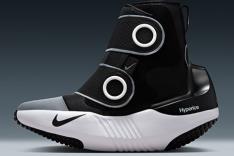What scientists have found is that a high cadence (defined as 90 rpm) reduces muscle force, neuromuscular fatigue and myoelectrical (the electricity generated by muscles) activity. High cadence reduces muscular fatigue, but drives up the oxygen expenditure and heart rate. On the other hand, when cyclists were asked to pedal at a constant power output, lower cadences resulted in reduced oxygen expenditure—or what science calls improved gross efficiency.
Studies on Self Selection
Cadence and its affect on overall performance is influenced by many factors, including fitness, cycling experience, age, muscle recruitment, muscle fiber composition, neuromuscular fatigue, metabolic fatigue, hemodynamics (blood flow), anthropometric measures, gear ratios, position on the bike, event duration, road gradient and intensity of exercise.
Studies have found that when exercise is done at low intensities, cyclists tend to self-select higher cadences. In theory, this minimizes muscular fatigue. During high intensity exercise, cyclists choose a lower cadence that preserves energy output. In order to minimize both muscle and metabolic fatigue, cyclists will often self-select a combination of cadences during long events depending on the terrain and how far they are from the finish line.
More: 23 Fun Facts You Didn't Know About the Tour de France
There have also been multiple studies conducted that have asked cyclists to ride at a given power output or percent of VO2max at various assigned cadences (such as 70, 80, 90, 100, 110 rpm) for a particular time duration. The final opinion for many of these studies was that no one single cadence will work for every cyclist, and that the optimal cadence is one that is self-selected by the cyclist.
Is High Better Than Lower?
Studies that looked at performance of cyclists at self-selected cadence found that metabolic output was optimized. Because of this, there does not appear to be a single optimal cadence for every cyclist in all conditions.
Based on the results of these studies, it could be argued that if you force a particular cadence with a computer or a metronome rather than allowing a cyclist to self-select cadence, performance will decrease. You can play with this concept yourself by looking at a forced cadence, heart rate output and power production (if you have a power meter) during a workout.
More: What Does Your Bike Say About You?
To answer your question more directly, the optimal cadence for you is the one that allows you to go the fastest for the least metabolic and muscular cost for the duration of your ride or event. Your optimal cadence will likely vary during the course of any long event such as a century.
If you're looking for gross numbers that are a result of a research paper, scientists believe that using a higher cadence—perhaps around 120 rpm—works well for sprint performances. For long distance cycling, a lower cadence of 90 to 100 rpm is likely beneficial. For ultra-cycling events, cadences of 70 to 90 rpm may be appropriate for improved performance. If you mountain bike, optimizing performance on steep, loose climbs may require the selection of lower cadences, less than 70 rpm.
Remember that these are general guidelines, and that to perform your best you should choose a cadence that feels comfortable to you.
More: 10 Common Cycling Mistakes to Avoid
 Ready to ride? Search for a cycling event.
Ready to ride? Search for a cycling event.
- 2
- of
- 2
About the Author

Gale Bernhardt was the USA Triathlon team coach at the 2003 Pan American Games and 2004 Athens Olympics. She's worked as one of the few World Cup coaches and delivered coached education training for the Triathlon Union's Sport Development Team. She has coached Olympic road racers, World Cup mountain bike riders and Leadville 100 racers. Thousands of athletes have had successful training and racing experiences using Gale's ready-to-use, easy-to-follow training plans.








Discuss This Article